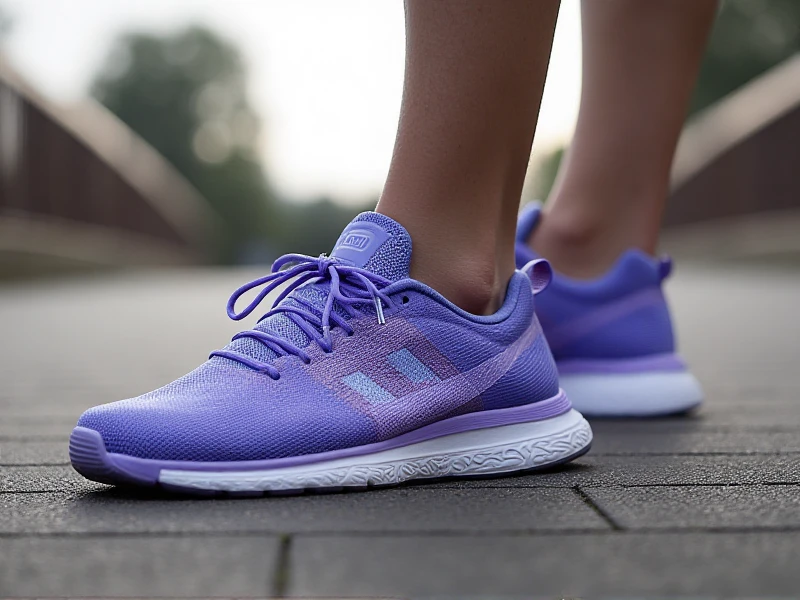Why Men's Training Shoes Are Essential for Your Fitness Journey
2025-06-05

When it comes to getting the most out of your workouts, choosing the right footwear isn't just an afterthought—it's a game-changer. Men's training shoes are designed specifically to handle the demands of gym sessions, weightlifting, HIIT classes, and other cross-training activities. As someone who's spent years in the fitness world, I've seen firsthand how the wrong pair can lead to aches, injuries, or subpar performance. In this guide, we'll dive into what makes training shoes for men so important, the key features to look for, and tips for finding your perfect fit to elevate your training routine. Whether you're a beginner or a seasoned athlete, understanding this gear can help you push harder and recover faster.
What Are Men's Training Shoes and Why Do They Matter?
Men's training shoes stand out from regular sneakers or running shoes because they're built for versatility. They provide stability during lateral movements, like side shuffles or lunges, while offering enough flexibility for exercises like squats or deadlifts. This support reduces the risk of common injuries such as ankle sprains or plantar fasciitis. Unlike running shoes, which focus on forward motion, training shoes emphasize a flat, stable base for lifting and multi-directional agility. I remember trying a generic pair early in my fitness journey and feeling unstable during box jumps—it taught me that specialized shoes aren't just hype; they're essential for safety and efficiency. Plus, they're often lighter and include breathable materials to keep feet cool and dry, even during intense sessions.
Key Features to Look for in Quality Training Shoes
Not all training shoes are created equal, so let's break down what sets the best ones apart. First up is stability and cushioning. Look for a firm heel counter and a wide base to prevent rolling your ankles—this is crucial for heavy lifts or explosive movements. Many options incorporate foam technologies like Nike's React or Adidas' Boost for responsive cushioning that absorbs impact without losing support. Weight matters too; opt for lightweight models that won't slow you down during high-energy workouts. Another feature to consider is the outsole pattern. A multidirectional tread pattern provides better traction on gym floors, reducing slips during quick direction changes. For material, breathable uppers like mesh wick away sweat, while reinforced toe caps guard against abrasion from rope climbs or burpees. Durability is key—I've tested pairs that lasted over six months of daily use by prioritizing abrasion-resistant designs. Lastly, ensure a snug fit without being too tight. A good pair of men's training shoes should feel secure from the first wear, with enough room for toe splay to avoid blisters.
How to Choose the Best Pair Based on Your Activities
Selecting the ideal training shoes varies depending on your workout style. If your routine includes lots of weightlifting and low-impact exercises, choose shoes with minimal cushioning and a hard, non-compressible sole to maximize stability during lifts. For mixed-mode trainers who do everything from sprints to yoga, hybrid shoes with moderate cushioning excel—they adapt for everything except long runs (stick to running shoes for that). Foot type plays a role too: those with high arches benefit from extra arch support, while flat feet need motion control to prevent overpronation. I advise trying on pairs in-store if possible, walking around or doing a mini-workout to test comfort. Online, check size charts carefully since brands like New Balance or Under Armour might fit differently. Budget-wise, quality options start around $80, but investing in trusted brands ensures long-term value. Remember to replace your shoes every 300-500 miles to maintain performance and avoid worn-out padding that leads to injuries. In summary, think about your primary activities and focus on versatility for cross-training.
Top Benefits and Why They Supercharge Your Performance
The advantages of men's training shoes go beyond comfort—they boost overall results. Enhanced performance is a big win; proper shoes improve balance and power transfer, making each rep or jump more effective. For instance, during agility drills, a stable base helps you change direction faster, while in resistance training, it prevents energy loss to the ground. Injury prevention is another massive benefit. Wearing specialized footwear reduces stress on joints like knees and hips, allowing for faster recovery. Plus, with better cushioning, you'll notice less fatigue after intense sessions, letting you train harder for longer. On the lifestyle side, sleek, modern designs from top brands make them perfect for casual wear, blending style and function. Over time, consistent use improves foot health too, by encouraging proper gait. I recall coaching a client who switched to dedicated training shoes after shin splints—within weeks, his mobility soared, proving that small gear changes yield big rewards. So, don't skimp here; view them as an investment in your fitness longevity.
Wrapping it up, men's training shoes are indispensable for anyone serious about their workouts. They offer the support, flexibility, and comfort needed to tackle diverse exercises safely and efficiently. By understanding the key features and selecting based on your specific needs, you'll unlock better performance and fewer setbacks. If you're shopping now, explore reputable retailers or consult a trainer for tailored advice. Remember, a great pair can transform your routine—so lace up and see where yours take you. For more fitness tips or shoe reviews, keep an eye on our latest blog updates!
By following these insights, you're set to make an informed decision that enhances every workout. Happy training!
Category: